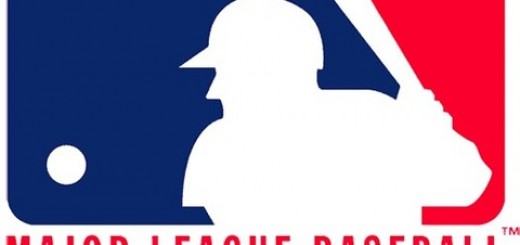Congratulations are in order for Greg Maddox, Jeff Glavine, and Frank Thomas. Cooperstown’s latest inductees are all undoubtedly Hall of Fame talents.
As for the writers that voted them in? They’re collectively closer to minor league talents.
It’s unbelievable how self-righteous and blissfully ignorant the members of the Baseball Writers Association of America have become. You can see it in their selectivity and arbitrariness with regard to their Hall of Fame voting–specifically of suspected steroid users.
Take Jeff Bagwell for instance.
Bagwell was never, NEVER proven, implicated, or even suspected of taking steroids. If you are cocking your head to the side thinking that I couldn’t possibly be right, I promise you, I am. And at this point it seems highly unlikely that evidence will suddenly materialize that does implicate Bagwell.
So what exactly is the Hall of Fame voters’ rationale for only giving 56% of their vote to one of the top hitters of his decade?
Phillip Hersh from the Chicago Tribune shed some light on the Bagwell debacle by opining that he was “just too suspicious about Jeff Bagwell to include him” among last year’s selections. And what exactly were those suspicions based on? Nothing more than unsubstantiated gossip … the sort of rumors that have the same credibility as the tabloid magazines that claim President Obama’s body and mind are being controlled by Aliens on Mars, or that Khloe Kardashian is as hot as her sisters.
And Hersh isn’t alone.
Fellow Hall voter Scott Gregor of the Daily Herald admitted last year that “[s]uspicions of using ‘performance enhancing drugs’ weigh[ed] heavily on [his] decision to leave off productive players such as Bagwell, Mark McGwire, Rafael Palmeiro and Juan Gonzalez.”
Well if it’s a “weight-based system” of worthiness to the Hall, let’s hope Gregor didn’t assign the same negative weight to Bagwell as he did to the other guys. After all, Gregor grouped Bagwell along with:
- A player who has admitted past steroid use (McGwire).
- A player who tested positive for steroids (Palmeiro).
- A player who was included in the Mitchell report and was therefore implicated for taking Steroids (Gonzalez).
So why exactly is Bagwell on this list? Because he has big muscles? Because he played on a team that included Ken Caminiti?
Bagwell is hardly alone in his unsubstantiated suspicion-fueled infamy. Consider Ivan Rodriguez, and Mike Piazza – 2 more stars from the 90s that are rumored to have taken PEDs. Should they, along with Bagwell, be punished because they (1) “had big muscles” (Bagwell), (2) were implicated by Jose Conseco (Pudge), or (3) were accused by a NY Times writer due, in large part, to his “back acne” (Mike Piazza)?
And here’s the problem: what about the guys who haven’t been implicated?
What about the Carlos Delgados or Jim Thomes of the world? I personally don’t think either of them used PEDs, but who’s to say they didn’t? Both of those guys peaked at the height of the steroid era. Delgado came back from injuries to have a 35+ HR seasons in his late 30s. That’s a lot more easily accomplished with HGH.
And then there’s all the guys in the Hall of Fame already, who cheated just as much, if not more than these guys.
Mike Schmidt consistently took speed (“greenies”), as did just about every other MLB star in the 70s and 80s.
Sandy Koufax and a bunch of other pitchers in his era took a little-known anti-inflammatory drug called “Butazolidine.” You can’t find it anymore because it’s unbelievably unsafe–it’s meant for Horses, not humans. The drug is a miracle-worker though if you’re trying to pitch through an injury. Koufax did just that for the last two years of his career–his best 2 years I might add .
And how about the spitball–a pitch that can turn a mediocre fastball into a 90 mile per hour forkball?
Let me pose you this fun hypothetical: would you rather face a pitcher who’s taken steroids or a pitcher allowed to throw the spitter? Don Drysdale (a Hall of Fame pitcher from the 50s) was notorious for his use of the spitball. Gaylord Perry (another hall of famer) was such a notorious user of the pitch that he later named his autobiography “Me and the Spitter.”
The list goes on and on.
Yet another Hall of Fame pitcher, Whitey Ford, used to cut the ball with his wedding ring and put a mixture of baby oil, turpentine, and resin on the ball–a mixture he would prepare before games. It was called the “gunk ball .”
It’s a well known fact that the Hall of Fame is littered with players who are proven cheaters. And as far as anyone knows, it may be littered with other players that cheated but got away with it.
I just don’t see PED use as the place you draw the line — because PED use is cheating, yet clearly cheating doesn’t preclude a player from Cooperstown.
Ultimately, the Hall of Fame should be more about a player’s contributions on the field and their ultimate contribution towards the sport. It needs to take the entire scope of a player’s actions into perspective.
In the case of Sammy Sosa, that means he needs to be recognized for helping to expand the popularity of the major leagues to the Latin Americas. It means he has to be appreciated for being the face of baseball in the late 90s and early 2000s. And yes, it means he has to be condemned for his likely steroid use.
But keeping him out of the Hall because he used steroids is simply not the right answer.
It’s not fair to the guys like Bagwell, who get caught in the crossfire of suspicion, and its not fair to guys like Alex Rodriguez, whose Hall of Fame credentials are simply too great not to outweigh the specter of past transgressions-especially with so many proven cheaters already in the Hall.
Ultimately, the only way you do right by the Bagwells of the world is to simply lower the bar of entry to the point where unfounded suspicion will never be an impediment to a player’s Hall of Fame candidacy.
Because when unfounded suspicion does succeed in pervading the collective consciousness of the Baseball Writers Association of America, what you have is a troubling situation of the media propagandizing rumors that are later used as the basis of precluding an individual from hall of fame consideration. In this scenario, the media’s vote is not being used as a representation of the collective voice of its audience, as it was intended. Rather, it’s a vote with an agenda-an agenda as big as Kerry Washington’s on the show Scandal.
The bottom line is that unfounded suspicion can’t be the “line in the sand” that baseball uses to try and repair its image. You simply can’t turn the hall of fame vote into a marketing campaign. And most importantly, you can’t keep guys like Bagwell out of the Hall and pretend that every player in it now, and everyone who will be in it 100 years from now, are clean.



Recent Comments